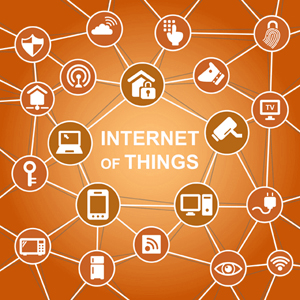 The Internet of Things sounds like a world straight out of a sci-fi film. Imagine a house in which all the appliances communicate, where your clothes, shoes and jewelry recommend outfit choices, and your car sends you an alert first thing in the morning to update you on weather, traffic patterns and mileage left in your gas tank. It really sounds lovely. But the hype train won’t continue forever.
The Internet of Things sounds like a world straight out of a sci-fi film. Imagine a house in which all the appliances communicate, where your clothes, shoes and jewelry recommend outfit choices, and your car sends you an alert first thing in the morning to update you on weather, traffic patterns and mileage left in your gas tank. It really sounds lovely. But the hype train won’t continue forever.
To present a full picture, let me explain the top 5 most common reasons some might doubt the IoT’s sustainability.
- There are no rules for standardization. By far the largest and most insurmountable problem with the IoT is the lack of industry standards. Right now, start-ups and corporations are all racing to put out their IoT objects first, without any regard to competitors’ technologies. So when consumers naturally adopt different brands for different products, how efficiently will they integrate together?
- We are given too many options. In the same vein, we’re being presented with too many solutions to the same problems. It’s expected to rain this afternoon- do I want this information from my watch, my umbrella, my sunglasses or my birdfeeder? Each of these will offer the ability to alert me of weather forecasts along with other “unique” services. Will I purchase them all? Will I narrow it down to one or two? Or will I become too overwhelmed with the choices to make a decision at all? Consumers will need advice and guidance to know which IoT technology is worth an investment.
- Brand relationships will go extinct. This argument is the underpinning of many sci-fi blockbusters: machines don’t have hearts! Strictly speaking about consumer-provider relationships, many brands will acutely feel the loss of interpersonal customer relationships. Companies will need to shift their strategies from using many human touch points to singular opportunities for positive interaction. Brand loyalty will be built or destroyed in single interactions (say, a phone call to Customer Service) rather than cultivated over multiple in-store experiences.
- The industry is overestimating consumer interest. According to Apple co-founder Steve Wozniak, the IoT industry is overestimating the appeal of interconnected devices. In a classic “bubble” trajectory, we can expect supply to overpower demand in the IoT market, serving us up with predictably unpopular objects like diapers that send out Tweets when they get wet. Startups are providing us with products and services we never asked for- and the oversaturated market will suffer for it. How do we distinguish between the IoT technologies with real, measurable value and those that have jumped on the hype train to clutter the landscape?
- Smart technologies are still not as smart as humans. I have seen the argument that the Internet of Things will bring about life-changing living services, adaptable to our every whim. But these objects, designed to anticipate our needs, rely on a faulty premise: that humans are predictable, consistent and behaviorally alike. I imagine I am like others, only in that my preferences change almost daily. My coffee maker can’t know if tomorrow I’ll be in the mood for dark roast or a latte because I don’t know what I’ll want in the future. Or maybe my car recognizes a pattern of weekday departures at 7:30 every morning, but starts itself on a day I’m sleeping in with the flu, unless I remember to change my settings? Many of the hyped IoT applications need to be pared down to match the pace of change we’re comfortable with. These objects shouldn’t evolve quicker than we can adapt to new technology in our lives.
